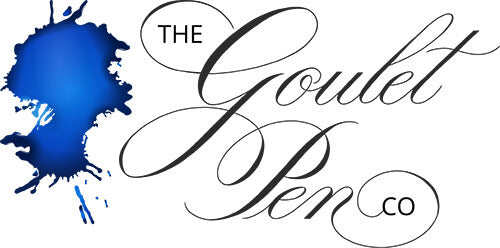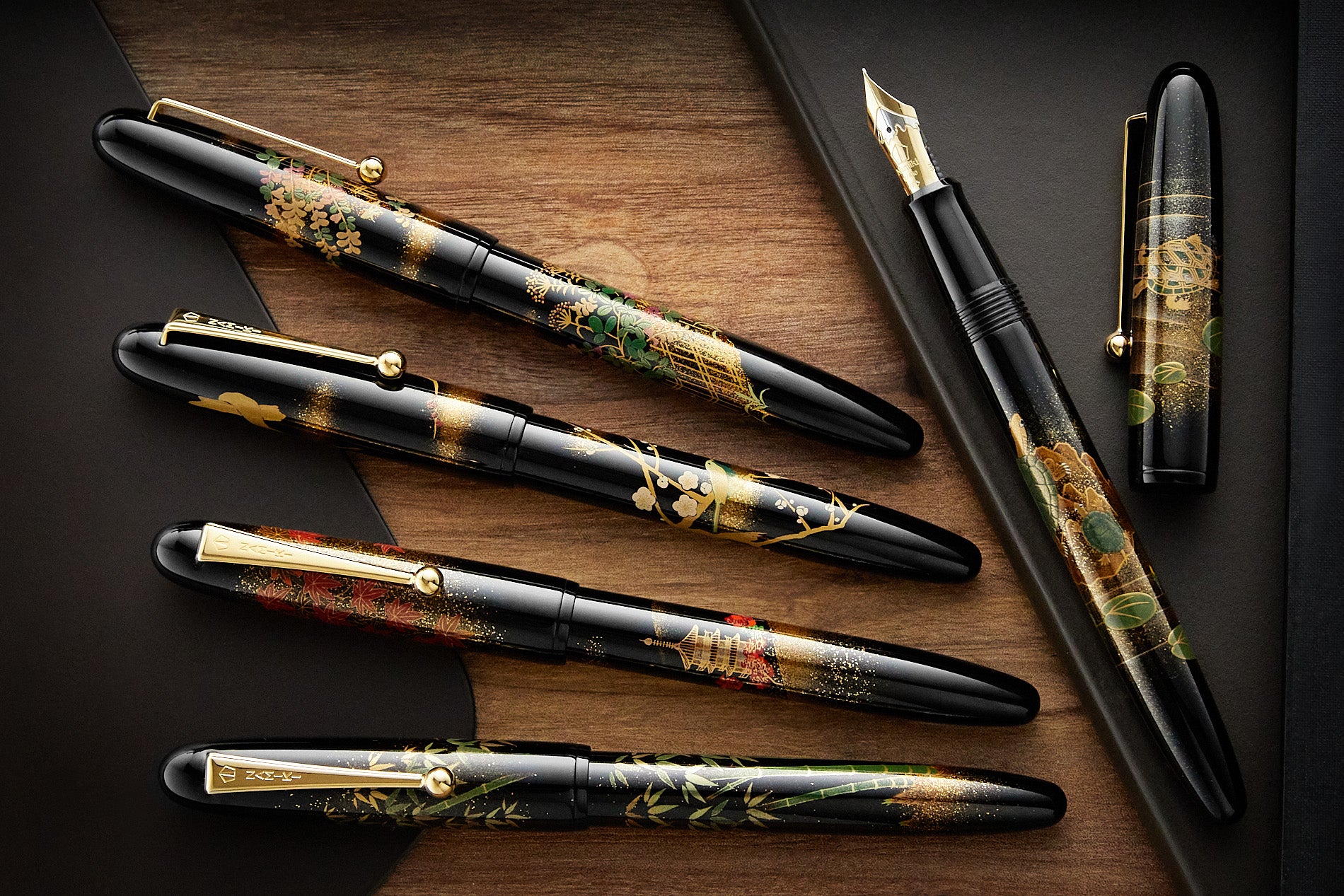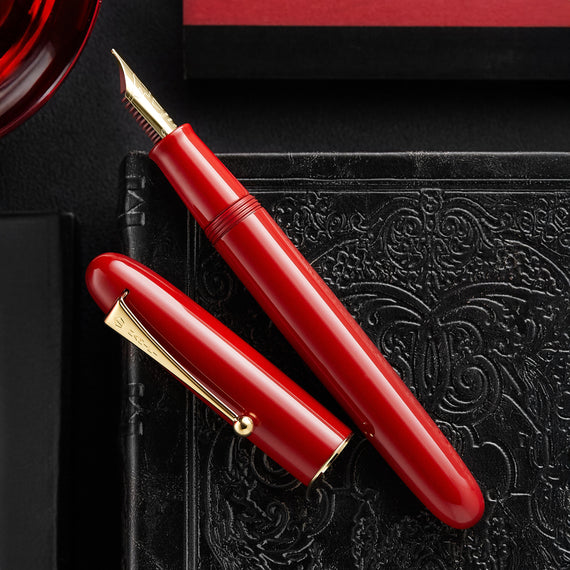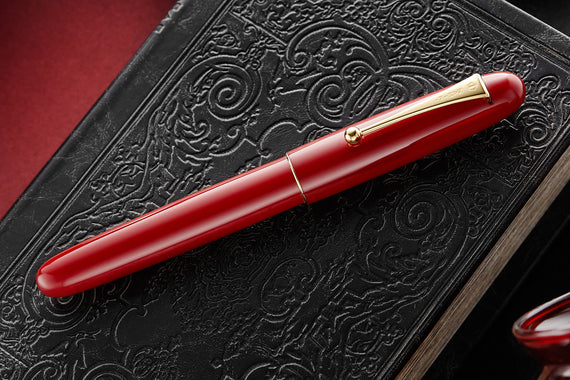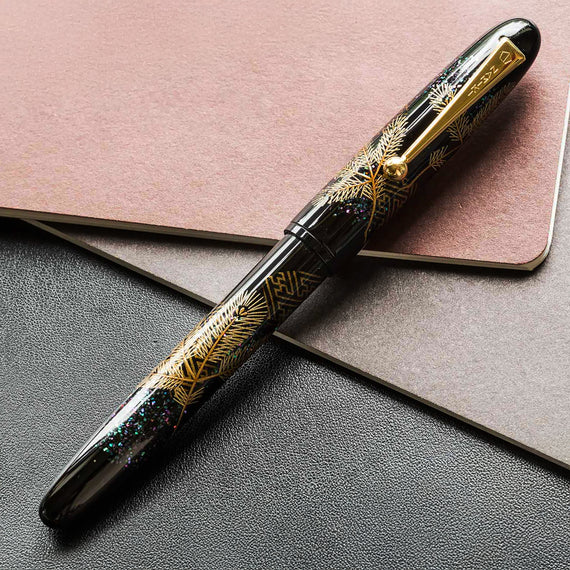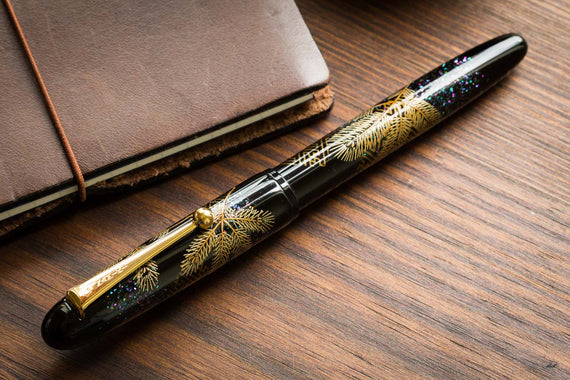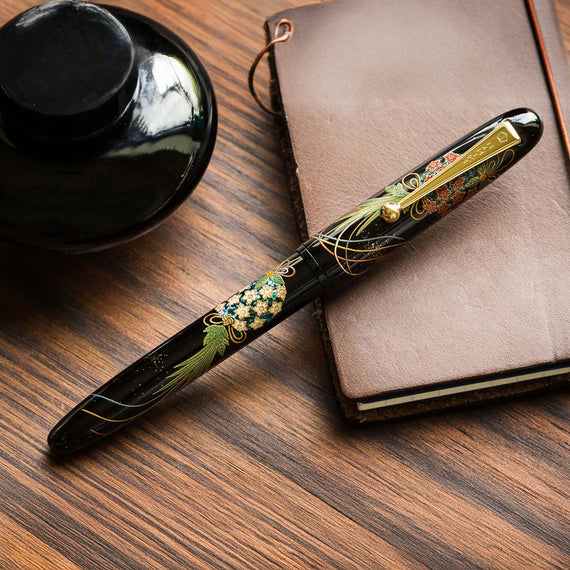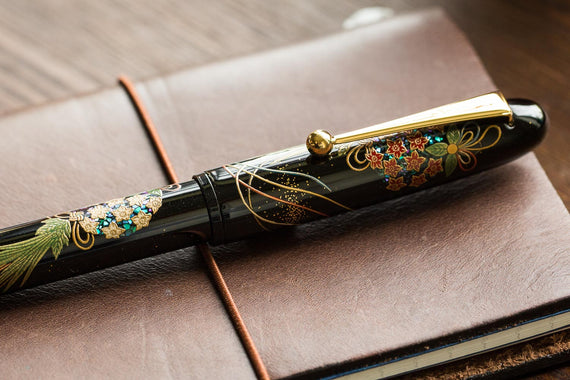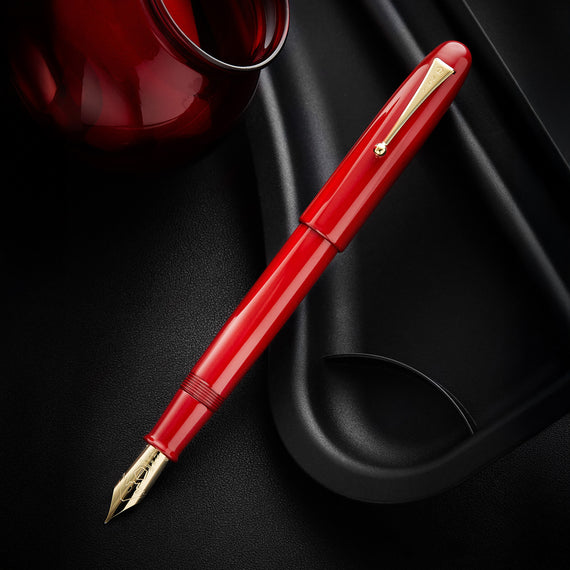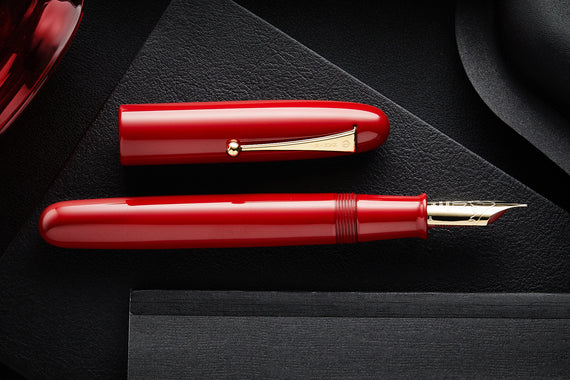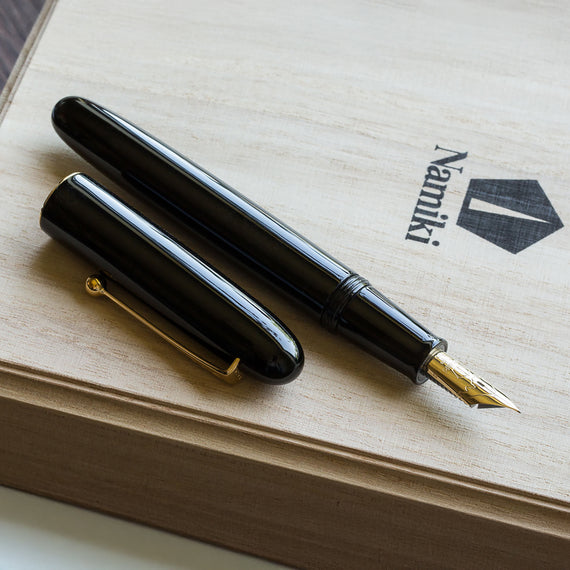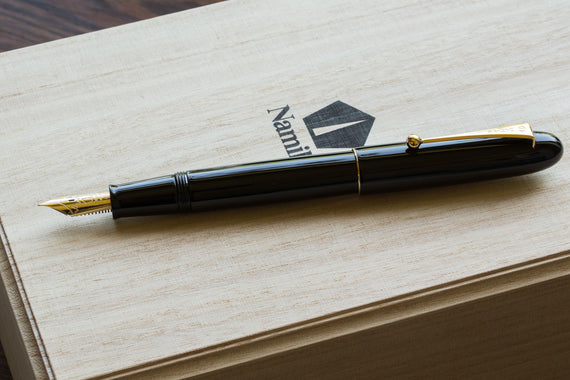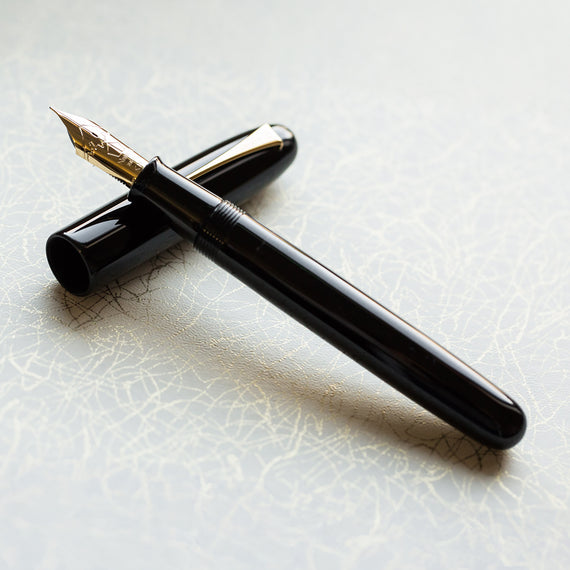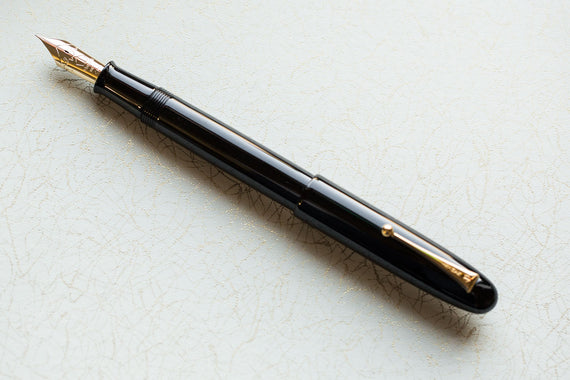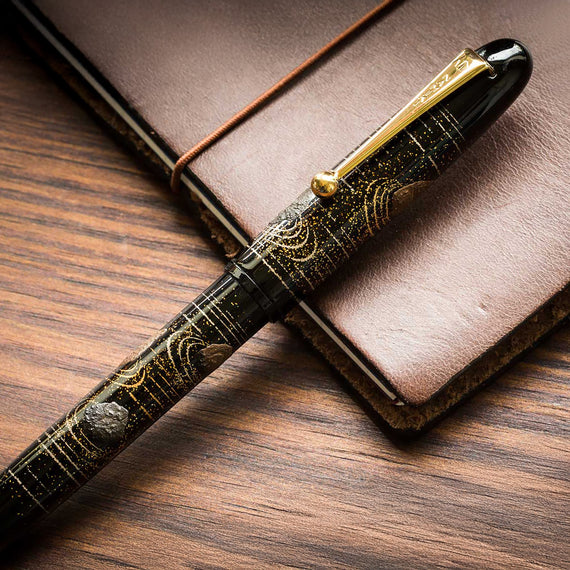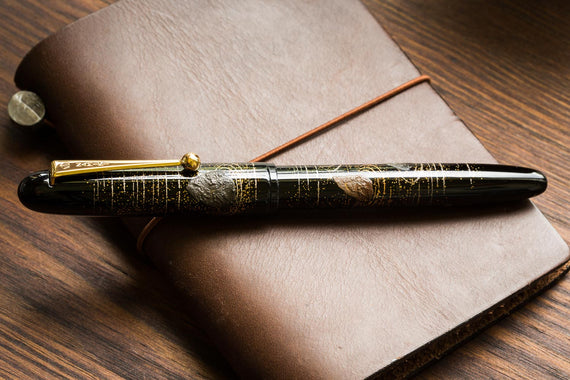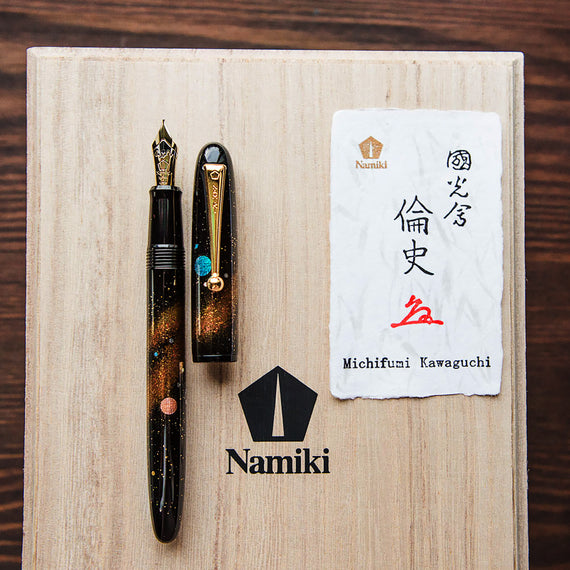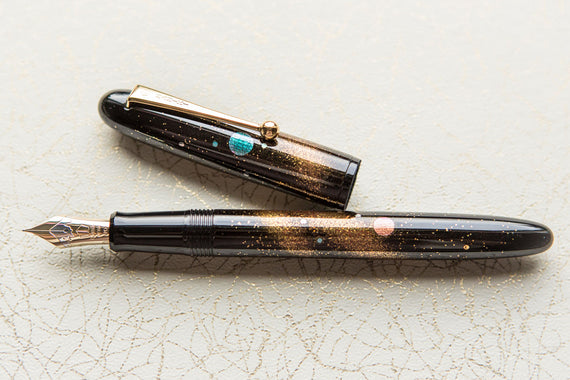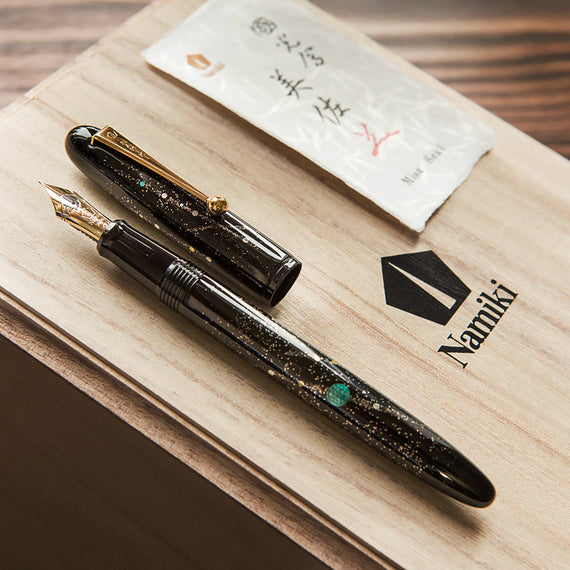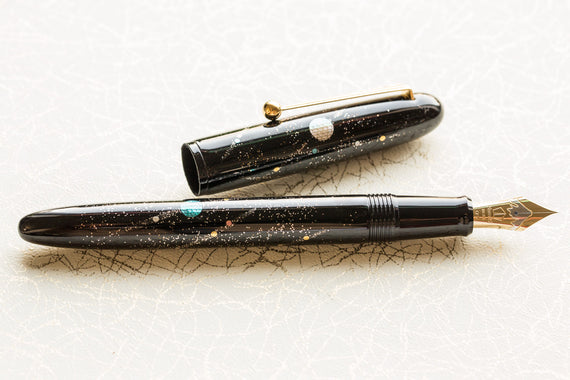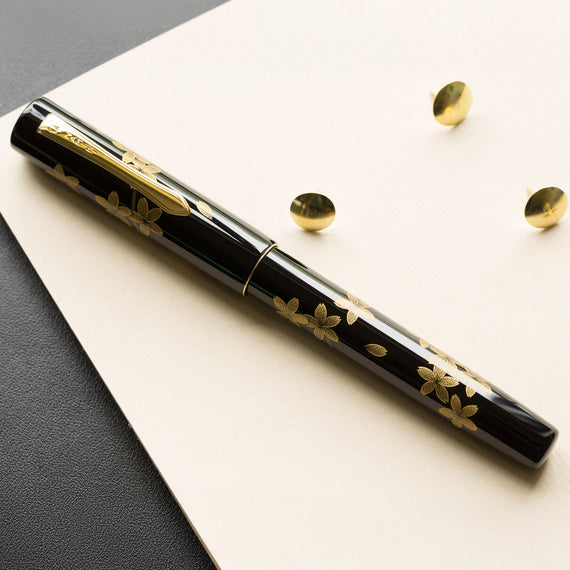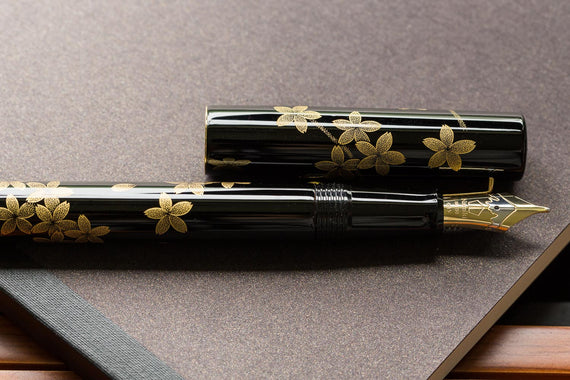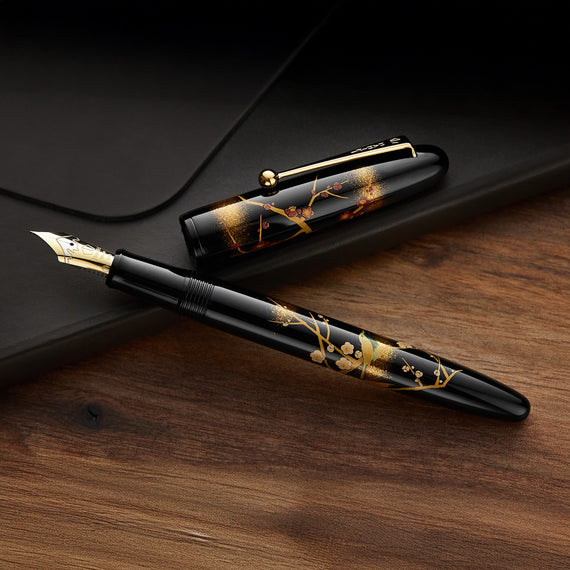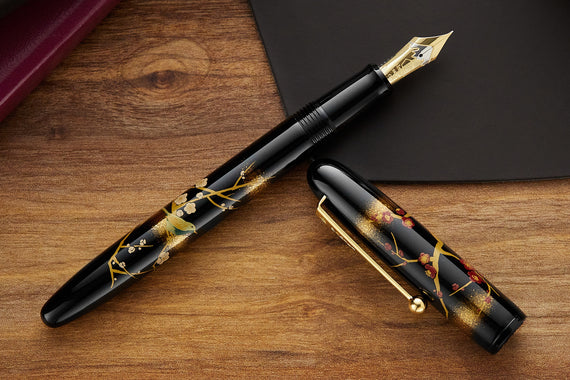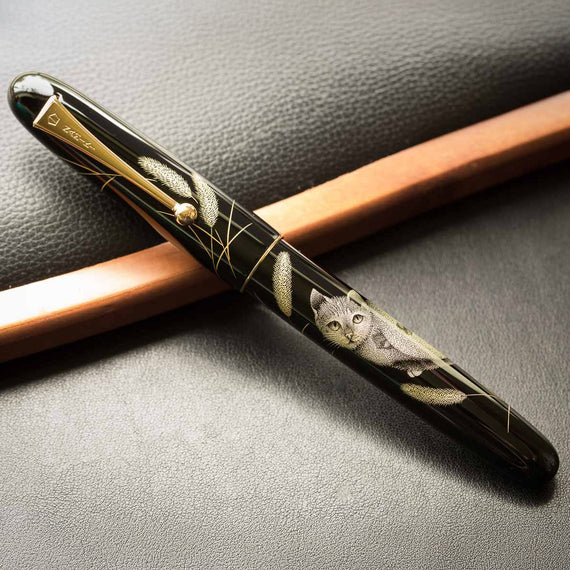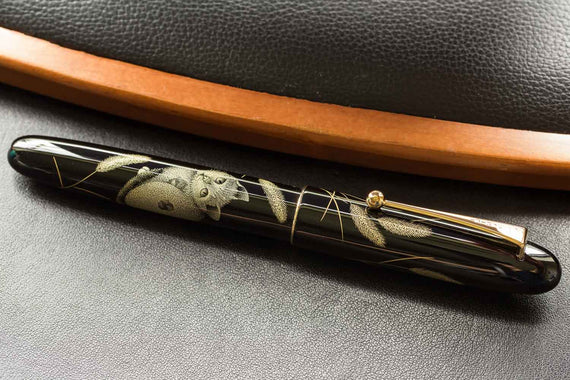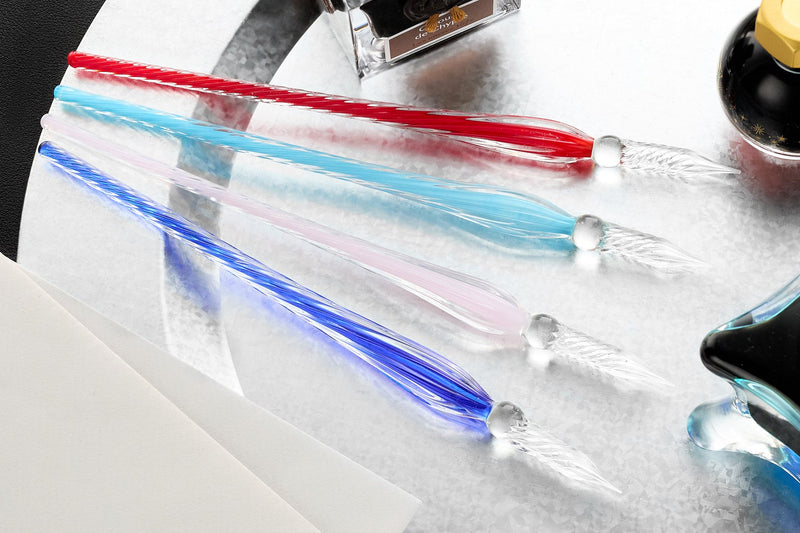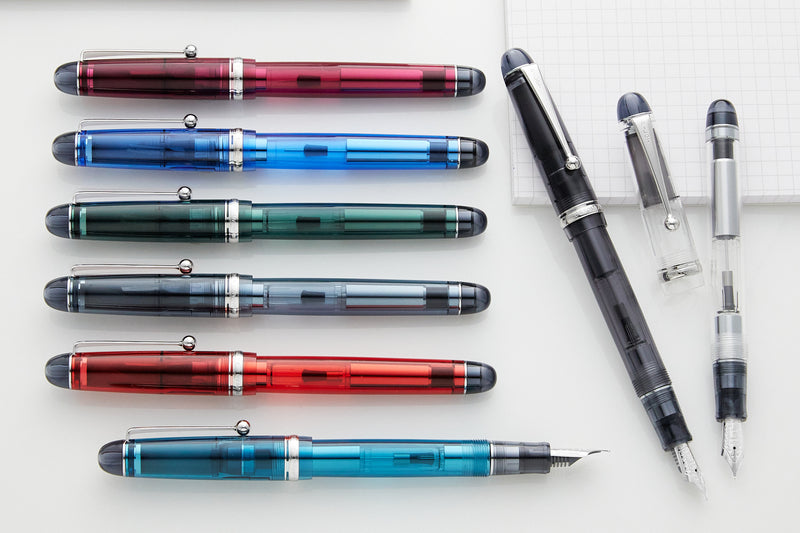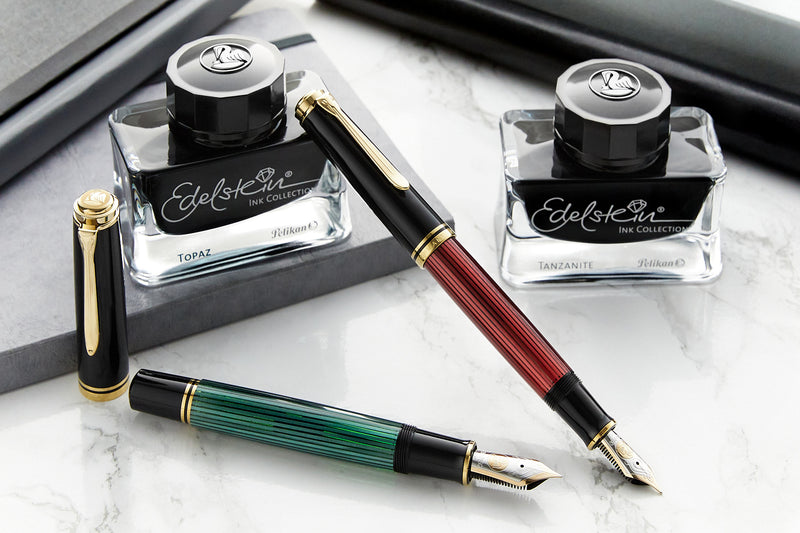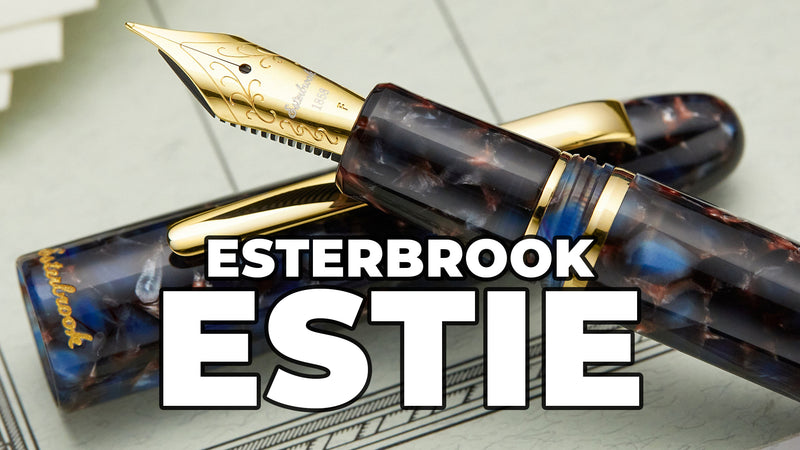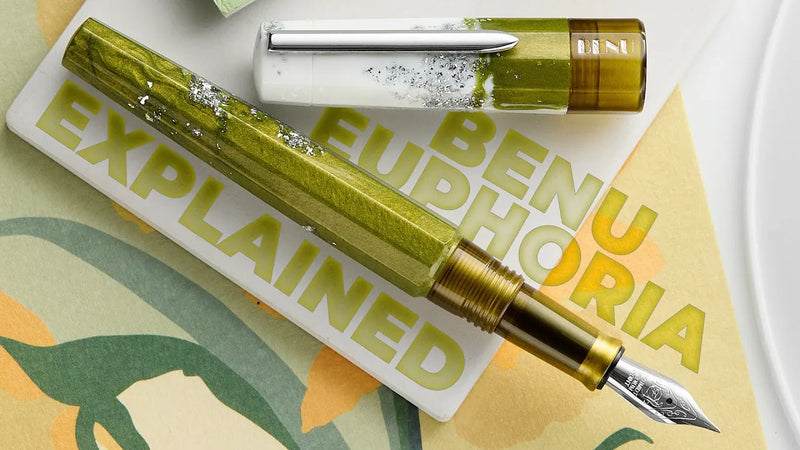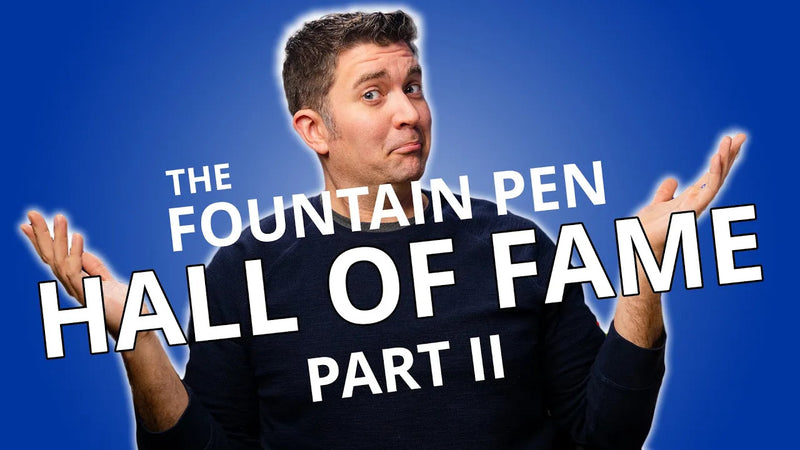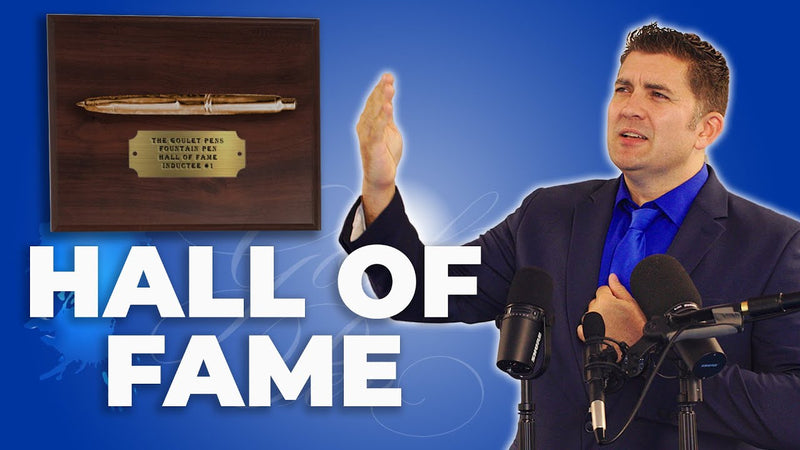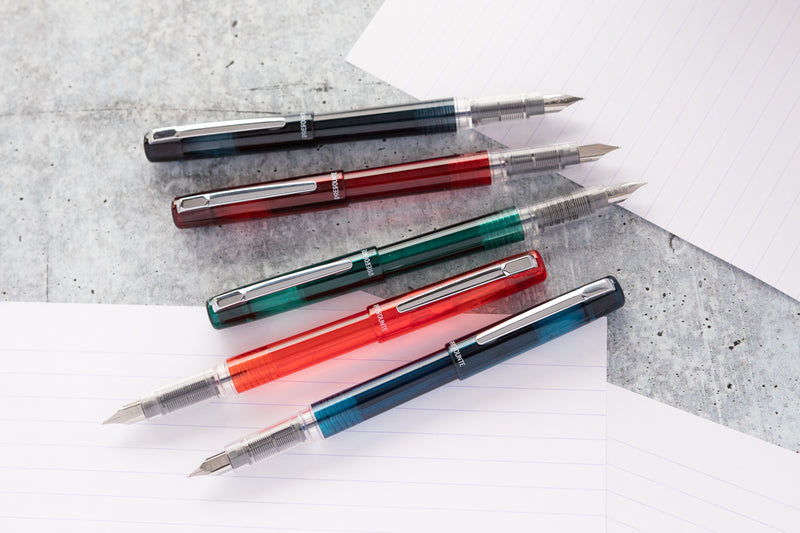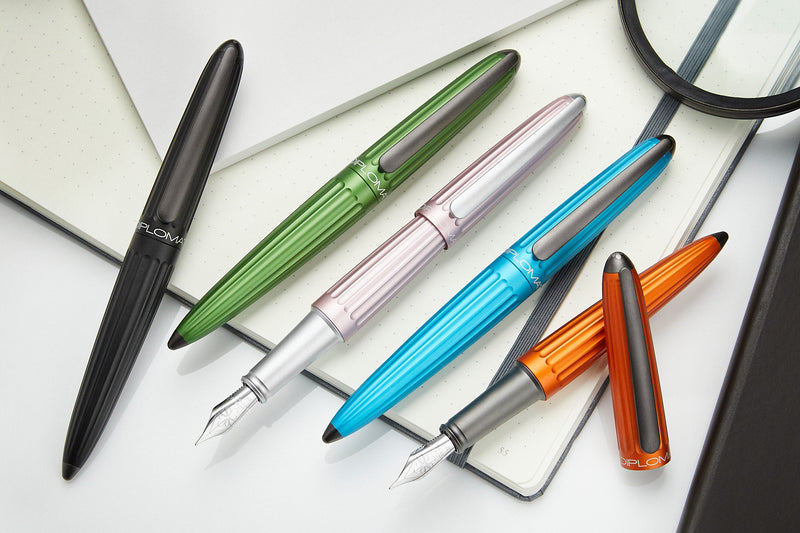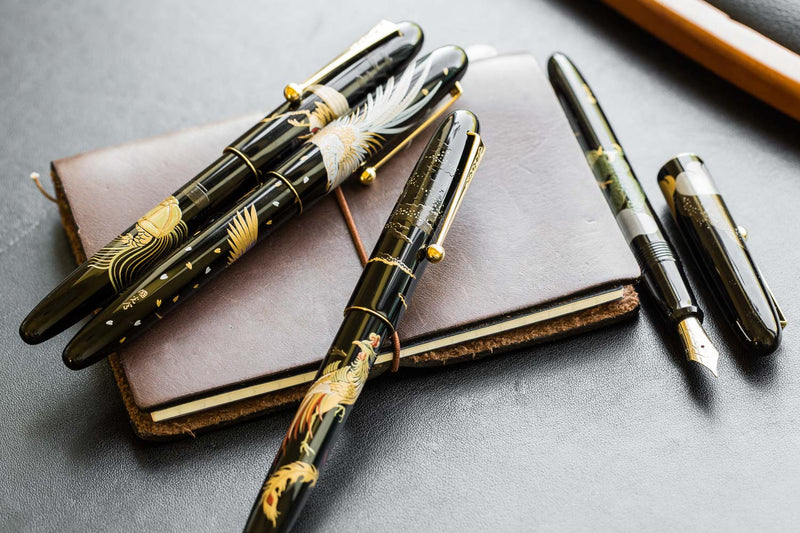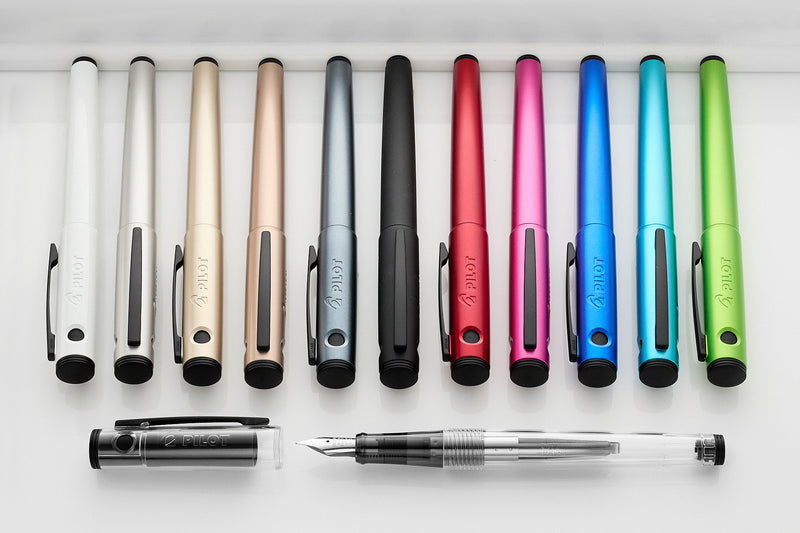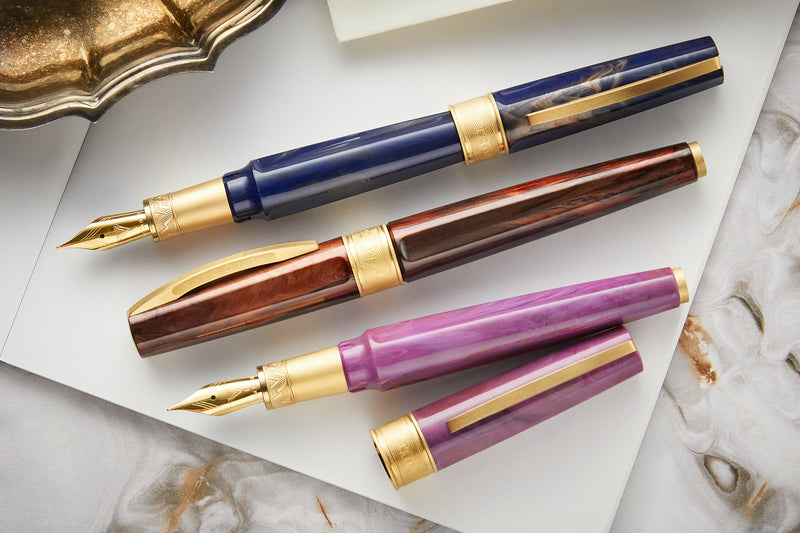Namiki Maki-e Fountain Pen Overview
We take great pleasure in presenting the distinguished collection of Namiki Maki-e fountain pens. Rooted in the time-honored Japanese tradition of Maki-e, this artistic discipline blends an unwavering commitment to precision, profound symbolism, and ancient mythology. To give you all the details of these incredible works of art, Brian sat down with John Lane, (now retired) from Pilot to learn the ins and outs of Namiki maki-e fountain pens.
At its essence, maki-e is the Japanese method of applying layers of urushi lacquer to a surface. This lacquer is both incredibly durable and smooth to the touch. To create the designs, gold, silver, and various other precious dusts are applied to the lacquer using a variety of proprietary techniques. This is a tradition that spans centuries and while the precise date is unknown, it is thought that the art form has been practiced since the 7th century in Japan.
While maki-e has a long history, it is by no means a stagnant art form. In 1925, the very beginning of what was to become the Pilot Pen company patented the Lacquer Naito method. The combination of maki-e technique with gold-nibbed fountain pens was what spawned the Japanese pen empire. Today, nearly 20 specialists work at Pilot's Hiratsuka plant devoting their time solely to creating Namiki maki-e fountain pens.
Techniques
Here is an overview of some of the techniques you'll see on Namiki pens:
Hira (Flat Maki-e)

Dating back to the 12th century, this technique is the simplest. A wet layer of lacquer is applied the the pen surface. While still wet, the colored powder is applied. Another layer of lacquer is applied to keep the design in place. The surface is then polished with a lacquer soaked piece of cotton until smooth and flat. These pens are typically more affordable because their elements are simpler and often done in a guild with each artist working on individual components before handing it off to one another. This is a way that younger artists are able to gain experience while working with more experienced ones.
Togidashi (Burnished Maki-e)

This is the oldest form of maki-e, dating back to the 7th century. Metallic or colored powders are applied to the lacquered surface. Once they have dried, another layer of lacquer is applied and then polished. More layers and continued polishing ensues, until the pattern is finished and the pen is smooth to the touch. Pens with this technique will be in the mid-high price range, as they take several months to complete and contain some more advanced elements. They are often created by a single artist from start-to-finish, but sometimes may be created by a collaboration from a group of artists, called kokkokai in Japanese, much like a guild.
Togidashi-Taka (Burnished Raised Maki-e)

This technique is the most difficult and demanding type of Maki-e and only done by the great master artists. Lacquer is drawn onto the pens and built up layer-upon-layer, creating a textured design. Up to 40 layers of lacquer are required for some of the higher raised elements. Metallic or colored powders are then added. The writer receives a pleasant tactile sensation while holding the pen. Not only is the design beautiful to look at, it is enjoyable to feel. Pens with this technique will be some of the larger and more expensive Namiki pens you'll find due to their complexity, the amount of time involved, and their limited availability. They are often created by a single artist from start-to-finish.
Chinkin

The Chinkin method differs from the others because it involves chiseling a design into a pre-laquered surface. Gold or silver powder is then applied and inlayed into the cutouts. Layers of lacquer are then applied to create a smooth surface. Each pen created using this method looks almost 3-dimensional, with the subtle chiseled line work and layers of gold or silver powder creating an impressive and dynamic picture.
Depending on the method, the process to create a maki-e pen can take anywhere from several weeks to seven months to complete. The process of lacquering, drying, and polishing is done in steps, with each step requiring diligent application and attention by a highly trained artist. Some pens can have anywhere from 15 to 50 layers of lacquer.
The Lineup
Namiki Nippon Art

Namiki Yukari

The Namiki Yukari fountain pens are some of the most comfortable for everyday writing. Similar in size to a Pilot Custom 74, they are great writers that also have a wide variety of captivating designs. You'll see a variety of different maki-e techniques used across the Yukari line, including hira, togidashi, taka, and raden. Because the pens are slightly thinner than some of the others and will only use a couple of maki-e elements on a particular pen design, they are relatively affordable compared to others. They have 18k gold nibs available in fine, medium, and broad, and the pen comes with a CON-70 converter.
Namiki Yukari Royale

The Namiki Yukari Royale fountain pens are slightly larger in size over the Yukari series, and higher in price due to their complexity. They feature more of the Togidashi-Taka techniques, and are usually made by a single artist. There are also several plain urushi versions of the Yukari Royale that are significantly lower in price that are absent of maki-e, in both Vermillion and Black. Each pen is equipped with an oversized 18k gold nib in fine, medium, or broad, and comes with a CON-70 converter. They are screw cap and push-to-post, and are the heaviest of the Namiki maki-e pens.
Namiki Aya

The Namiki Aya fountain pen collection is the newest maki-e model from Namiki, with designs lacquered by the highly revered Kokkokai group. The barrel artwork was designed using traditional maki-e urushi lacquer work and finished with a sprinkling of gold and silver dust using the togidashi polishing technique. Each pen features different colored urushi lacquer to create the rich hues of nature. The Namiki Aya Collection has a classical vest-type body style and is enhanced with an oversized No. 30 two-tone 18k gold nib featuring the iconic silhouette of Mount Fuji. This classical fountain pen is refillable for continued use with a Pilot ink cartridge or Pilot’s CON-70 converter, both of which are included, and arrives packaged in a beautiful Namiki wooden gift box.
Namiki Emperor

The Namiki Emperor is the largest of the Namiki Maki-e pens. The full magnitude of this pen is difficult to grasp until you see it compared to other pens. It is an impressive 6.85 inches (174.1mm) long when closed and has a diameter of .68 inches (17.2mm). The nib is 18k gold and a No. 50 size, one of the largest production nibs offered by a modern fountain pen company. The Emperors will be among the most expensive maki-e pens offered by Namiki, because of their massive size and the complexity of the designs. Despite its large size, the pen is actually extremely well balanced and is lighter than you would expect because it's made of solid ebonite instead of a metal base. It fills by eyedropper, and holds quite a bit of ink. There are two variations - a round-top with a clip, and a flat-top (vest style) that is clipless.
Namiki Chinkin

The Namiki Chinkin series uses the complex chiseling techniques to create a carving in the lacquer. The incredible details make each golden design stand out against the black background. There are many designs, each as intricate and detailed as the last. Their size is similar to the Yukari, Yukari Royale, or Emperor, depending on the design. Each pen has an 18k gold nib and comes with a CON-70 converter.
Namiki Raden Vanishing Points

We've carried the Raden Vanishing Point fountain pens for some time now. They're branded under Pilot and use some of the techniques you'll see in the other Namiki maki-e pens. The sparkle on these raden pens comes from abalone shells, applied to the body and then covered in lacquer. Since no two abalone are exactly alike, each pen has very subtle differences making each pen unique.
The price for each pen varies by model and design, depending on the complexity of the design and techniques involved. As much as they're beautiful works of art, they're also well tuned and ready to write. We've been told by Namiki that it actually gives their artists great pleasure to know that the collectors buying these pens are enjoying writing with them as well as looking at them.
These pens are not mass-produced, and are very limited in number and they require an incredible amount of time, often four months for each pen. It's not unusual for the artists to create a few different designs each year, and those designs will only be available for 2-3 years before they sell out worldwide.
You can find our entire collection of stunning Namiki Maki-e fountain pens at The Goulet Pen Company. We hope you enjoy viewing our photography on our website, and watching our video on these beautiful pens.

